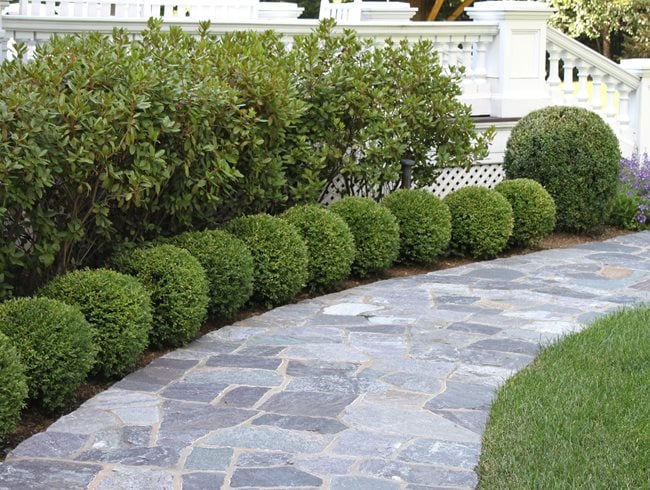5 Creative Plant Ideas for Stunning Landscaping
Plant ideas landscaping
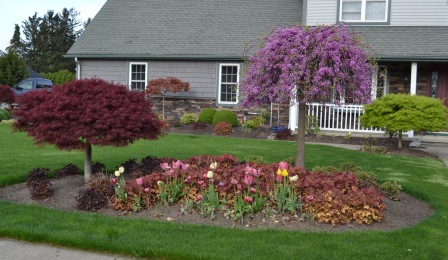
When it comes to creating a stunning and unique landscape, there are countless plant ideas to consider. From vibrant flowers to striking foliage, plants can add color, texture, and visual interest to any outdoor space. Whether you have a small garden, a spacious yard, or a balcony, incorporating these creative plant ideas can transform your landscape and make it truly stand out.
1. Vertical Gardens: Vertical gardens are a great way to maximize your space and add a touch of greenery to any wall or fence. Whether you choose to use a trellis, hanging planters, or a living wall system, a vertical garden can create a stunning visual impact and provide a unique backdrop for your outdoor space.
2. Ornamental Grasses: Ornamental grasses are a versatile and low-maintenance option for adding texture and movement to your landscape. From tall, graceful varieties like miscanthus to compact, clumping ones like blue fescue, ornamental grasses can add a touch of elegance and beauty to any garden or backyard.
3. Succulents: Succulents have become increasingly popular in recent years due to their unique shapes, colors, and ability to thrive in arid environments. From rosette-shaped echeverias to trailing strings of pearls, these drought-tolerant plants can be used to create stunning arrangements in containers, rock gardens, or even as ground cover.
4. Architectural Shrubs: Architectural shrubs are perfect for adding structure and visual interest to your landscape. From boxwoods to holly bushes, these shrubs can be pruned into geometric shapes or used to create hedges, adding a touch of elegance and formality to any outdoor space.
5. Edible Gardens: Why not combine beauty with functionality by creating an edible garden? From a herb garden in planters to a raised bed filled with vegetables and fruits, an edible garden not only provides fresh produce but also adds a vibrant and attractive element to your landscape.
Incorporating these creative plant ideas can help you create a stunning landscape that reflects your personal style and enhances the beauty of your outdoor space. Whether you choose to experiment with vertical gardens, introduce ornamental grasses, or create an edible garden, the possibilities are endless. So, go ahead and let your creativity blossom!
Unique Plant Combinations

1. Succulents and Rocks

Succulents are known for their ability to thrive in arid conditions, making them an excellent choice for landscaping in areas with limited water availability. One unique plant combination that can create a stunning visual effect is pairing succulents with rocks. The contrasting textures and colors of the succulents and rocks create an interesting and eye-catching display. Consider selecting a variety of succulent species with different shapes and sizes to create a dynamic and visually pleasing arrangement.
2. Ornamental Grasses and Perennials
Combining ornamental grasses with perennials can create a beautiful and low-maintenance plant combination. Ornamental grasses add movement and texture to the landscape, while perennials provide color and variety. Choose grasses with different heights and textures to create a layered effect, and pair them with complementary perennials that bloom at different times of the year to ensure year-round interest in your landscape.
3. Herbs and Flowers
Combining herbs and flowers in your landscaping can create a visually appealing and functional garden. Herbs, such as lavender, rosemary, and thyme, not only add fragrance and beauty to the garden but can also be used in cooking or for medicinal purposes. Pairing these herbs with flowers like marigolds, pansies, or petunias can create a colorful and aromatic garden that is both beautiful and useful.
4. Native Plants and Wildflowers

Using native plants and wildflowers in landscaping can provide a natural and low-maintenance garden that attracts local wildlife such as butterflies, bees, and birds. Native plants are well-suited to the local climate and require less water and maintenance compared to exotic species. Pairing native plants with wildflowers can create a vibrant and ecologically beneficial garden that supports local biodiversity.
5. Fruits and Vines
:max_bytes(150000):strip_icc()/vibrant-pink-bougainvillea-flowers-in-florida-keys-or-miami--green-plants-landscaping-landscaped-lining-sidewalk-street-road-house-entrance-gate-door-during-summer-1081688576-93491ea219364bc4b01ef498d2ea64f8.jpg)
For a unique and edible plant combination, consider pairing fruit trees or shrubs with climbing vines. Fruit trees provide shade and produce tasty fruits, while climbing vines like grapes or kiwi can add vertical interest and create a lush and green backdrop. This combination not only adds beauty to your landscape but also allows you to enjoy the fruits of your labor by harvesting fresh, homegrown fruits.
Vibrant Flower Beds
Creating vibrant flower beds is a fantastic way to add color and beauty to your landscaping. With the right selection of flowers and plants, you can create stunning visual displays that will be the envy of your neighbors.
When choosing flowers for your flower beds, consider selecting a mix of annuals and perennials. Annuals provide instant color and can be easily changed out each year, allowing for different color schemes and flower combinations. Perennials, on the other hand, come back year after year, providing a stable foundation for your flower beds.
In addition to choosing the right flowers, it’s also important to plan out the layout of your flower beds. Consider the size and shape of your garden space, and choose flowers that will complement each other in terms of height, color, and blooming season. This will ensure that your flower beds look cohesive and visually appealing.
To make your flower beds even more vibrant, consider adding in some foliage plants. These plants provide texture and contrast to your flower beds, adding depth and interest. Foliage plants can be chosen for their unique leaf shapes, colors, and textures, creating a visually stunning backdrop for your flowers.
Finally, don’t forget to consider the maintenance requirements of your flower beds. Some flowers require more care and attention than others, so be sure to choose flowers that fit your gardening style and time commitment. Proper watering, fertilizing, and pruning will help to keep your flower beds looking vibrant and healthy.
Vertical Gardens
If you want to add a unique and eye-catching feature to your landscaping, consider incorporating a vertical garden. Also known as living walls or green walls, vertical gardens are a great way to maximize limited space and bring a touch of nature to any setting.
Benefits of Vertical Gardens
Vertical gardens offer several benefits beyond their aesthetic appeal. They help to improve air quality by filtering pollutants and releasing oxygen. Additionally, they can help to regulate temperature and reduce noise levels. For urban environments, vertical gardens can also help to combat the heat island effect and create a cooler and more comfortable space.
Choosing Plants for Vertical Gardens
When it comes to selecting plants for your vertical garden, it’s important to choose species that are well-suited for the specific location and conditions. Consider factors such as sunlight exposure, humidity levels, and the amount of space available for the plants to grow. Choose plants with shallow root systems and compact growth habits to ensure they thrive in a vertical setting.
Designing a Vertical Garden
Designing a vertical garden involves careful planning and consideration of various factors. Start by determining the location and size of your vertical garden. Consider the overall design and aesthetic you want to achieve. You can choose to create a uniform look by using one type of plant throughout, or opt for a more diverse and eclectic mix of plant species. Consider incorporating different colors, textures, and heights to create visual interest.
Maintenance of Vertical Gardens
Maintaining a vertical garden requires regular care and attention. Monitor the moisture levels and water the plants accordingly. Depending on the species and environmental conditions, some may require more water than others. Prune and trim the plants as needed to maintain their shape and promote healthy growth. It’s also important to regularly check for any pests or diseases and take appropriate action to prevent them from spreading.
With their unique design and numerous benefits, vertical gardens are a captivating addition to any landscaping project. Whether you want to create a green wall in your backyard or add a touch of nature to a commercial space, vertical gardens offer endless possibilities for creativity and beauty.
Edible Landscaping
What is Edible Landscaping?
Edible landscaping is the practice of incorporating plants that are both visually appealing and edible into your landscape design. It combines the beauty of traditional landscaping with the practicality of growing your own food. This concept is gaining popularity as more people recognize the benefits of growing their own fruits, vegetables, and herbs.
Benefits of Edible Landscaping
One of the main benefits of edible landscaping is the ability to have fresh, organic produce right in your backyard. By growing your own food, you have control over what pesticides and fertilizers are used, ensuring that your produce is healthy and safe to eat. Edible landscaping also promotes sustainability, as it reduces the need for transportation and packaging of store-bought produce.
Plants for Edible Landscaping

There are numerous plants that are suitable for edible landscaping. Fruit trees such as apple, pear, and cherry can provide shade, beauty, and delicious fruits. Berry bushes, such as raspberry and blueberry, can be planted along fence lines or in planters for easy access. Additionally, herbs like basil, mint, and thyme can be used as ground cover or in containers near a patio or walkway.
Designing an Edible Landscape

When designing an edible landscape, consider the layout and placement of the plants. Grouping plants with similar water and sunlight needs together can help with maintenance and efficiency. Consider the aesthetics of the plants as well, ensuring that they complement each other and the overall design of your landscape. Incorporating raised beds or containers can also provide structure and organization to your edible landscape.
In conclusion, edible landscaping is an innovative and practical way to beautify your yard while also growing your own food. With careful selection and design, you can create a stunning landscape that is not only visually appealing but also provides you with fresh, organic produce. Start incorporating edible plants into your landscaping today and enjoy the benefits of a beautiful and bountiful garden!
Drought-Tolerant Plants
Succulents

Succulents are a great choice for drought-tolerant landscaping. These plants have thick, fleshy leaves that store water, allowing them to survive in arid conditions with minimal watering. Some popular succulent varieties include aloe vera, jade plant, and echeveria. They come in a variety of shapes, sizes, and colors, making them a versatile addition to any landscape.
Lavender
Lavender is a beautiful and aromatic plant that thrives in dry climates. Its drought-tolerant nature and stunning purple flowers make it a popular choice for landscaping. Not only does lavender add beauty to your garden, but its fragrance also attracts pollinators like bees and butterflies. With proper care, lavender can survive long periods without water and still flourish.
Agave

Agave is a striking succulent that is known for its rosette-shaped leaves and sharp spines. This plant is native to arid regions and is incredibly drought-tolerant. Agave plants can survive with minimal water and still maintain their distinctive shape and texture. They come in a variety of sizes and colors, making them a popular choice for creating visual interest in landscapes.
Yucca

Yucca is a versatile plant that can thrive in both arid and semi-arid climates. It has long, sword-like leaves and produces large, white flowers. Yucca plants are highly drought-tolerant and can survive in dry conditions with minimal watering. They are also low-maintenance, making them an ideal choice for busy homeowners looking to add some greenery to their landscape.
Agapanthus

Agapanthus, also known as Lily of the Nile, is a stunning flowering plant that is well-suited for drought-tolerant landscapes. It features tall stalks of blue, purple, or white flowers that bloom in the summer. Agapanthus plants are known for their ability to survive in dry conditions and can tolerate periods of little to no rainfall. They are also deer-resistant, making them a great choice for gardens in areas with deer populations.
Summary

Drought-tolerant plants, such as succulents, lavender, agave, yucca, and agapanthus, are excellent choices for landscaping in dry climates. These plants have adapted to survive with minimal water, making them low-maintenance and environmentally friendly options. Whether you’re looking to create a desert-inspired garden or want to conserve water in your landscape, these drought-tolerant plants will add beauty and interest to your outdoor space.
Container Gardening
Container gardening is a versatile and creative way to add greenery and beauty to any space. Whether you have a small balcony or a large backyard, container gardening allows you to easily create stunning landscapes with plants in various shapes, colors, and sizes.
One of the benefits of container gardening is its flexibility. You can change the arrangement of plants whenever you want, giving you the opportunity to experiment and find the perfect combination. Additionally, container gardening is ideal for those who have limited space or live in urban areas where traditional gardens may not be feasible.
When it comes to container gardening, the options are endless. You can choose from a wide variety of plant types, including flowers, herbs, vegetables, and even small trees. Mixing different plants together can create a visually appealing and dynamic display.
Tips for Successful Container Gardening:
- Choose containers that have drainage holes to prevent waterlogging and promote healthy root growth.
- Use a high-quality potting mix that provides proper nutrients and drainage for your plants.
- Consider the sunlight and temperature requirements of the plants you choose and place them accordingly.
- Regularly water your container plants to keep the soil moist, but be careful not to overwater.
- Fertilize your plants regularly to ensure they receive the necessary nutrients for growth and flowering.
- Monitor for pests and diseases and take appropriate action to prevent damage to your plants.
Container gardening is a fantastic way to unleash your creativity and create stunning displays of nature. Whether you’re a seasoned gardener or just starting out, container gardening offers endless possibilities for beautifying your outdoor spaces.
Low-Maintenance Planting
When it comes to landscaping, low-maintenance planting options are a popular choice for many homeowners. These plants require minimal care and can thrive even with neglect or limited water and sunlight.
Succulents: Succulents are a great option for low-maintenance planting. They have thick, fleshy leaves that store water and can tolerate dry conditions. Some popular varieties include aloe vera, jade plant, and hens and chicks.
Native Plants: Choosing native plants for your landscaping not only ensures low maintenance, but also benefits the local ecosystem. Native plants are adapted to the specific environment and require little to no extra watering or fertilizing.
Groundcovers: Groundcovers are low-growing plants that spread across the ground, providing a natural and low-maintenance option for landscaping. They help prevent soil erosion, suppress weed growth, and require minimal care once established. Some common groundcovers include creeping thyme, creeping phlox, and sweet woodruff.
Ornamental Grasses: Ornamental grasses come in a variety of colors and textures and can add movement and visual interest to your landscape. These grasses are typically easy to care for and require minimal pruning and maintenance. Some popular options include feather reed grass, blue fescue, and miscanthus.
Drought-Tolerant Plants: If you live in an area with limited water resources, choosing drought-tolerant plants can help reduce water usage and maintenance. These plants can survive on less water and still look beautiful. Some popular drought-tolerant options include lavender, yucca, and agave.
By incorporating low-maintenance planting options into your landscaping, you can enjoy a stunning outdoor space without the hassle of constant care and maintenance. These plants are not only beautiful but also help conserve water and support the local ecosystem.
Seasonal Color Schemes
Choosing plant varieties for each season
Creating a stunning landscape involves carefully selecting plant varieties that will provide a burst of color during each season. By choosing plants that bloom or change foliage color at different times throughout the year, you can achieve a beautiful and dynamic garden all year round.
Spring color scheme
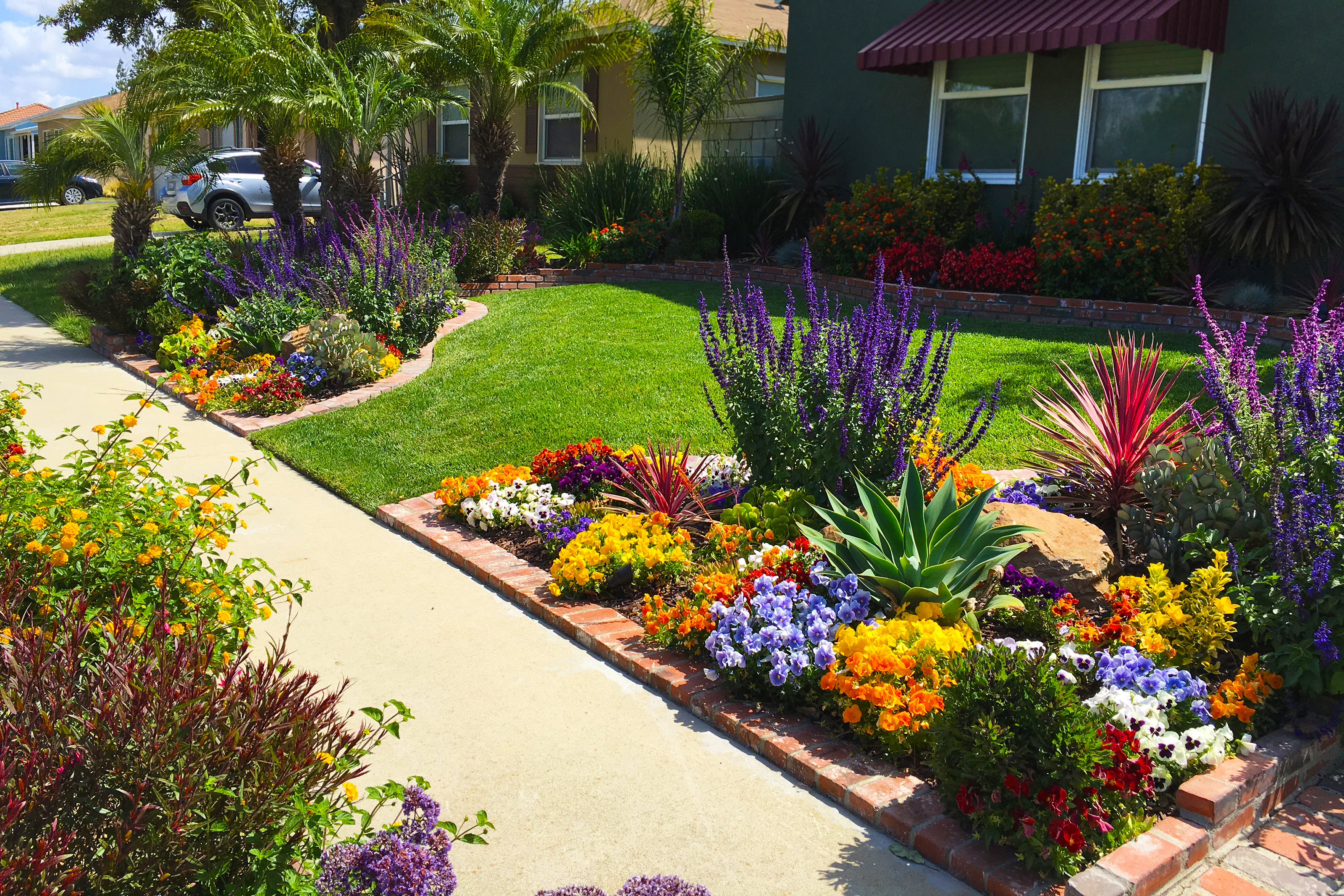
In the spring, vibrant and pastel colors are popular choices for creating a cheerful and refreshing atmosphere. Consider planting tulips, daffodils, and hyacinths for their bold and beautiful blooms. These flowers will create an eye-catching display and bring a sense of renewal to your landscape.
Summer color scheme
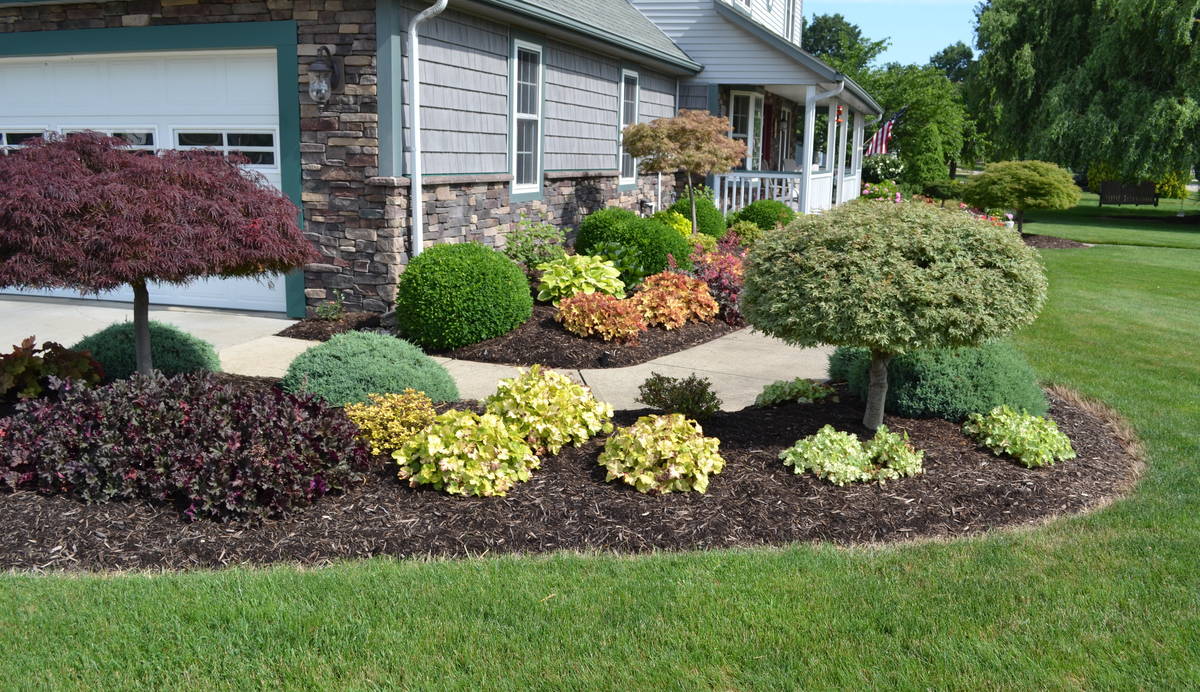
During the warm summer months, bold and vibrant colors are ideal for making a statement in your garden. Consider planting annuals like petunias, marigolds, and zinnias for their bright and attention-grabbing flowers. These plants will add a pop of color to your landscape and thrive in the summer heat.
Fall color scheme
:strip_icc()/curb-appeal-foliage-plants-1051svw5KQC9FAtl-M9kOB-336092f31a7f475187c5171363808dec.jpg)
In the fall, warm and rich colors are the perfect choice for creating a cozy and inviting atmosphere. Consider planting mums, asters, and ornamental grasses for their stunning shades of red, orange, and yellow. These plants will add a touch of warmth to your landscape and complement the changing colors of the season.
Winter color scheme
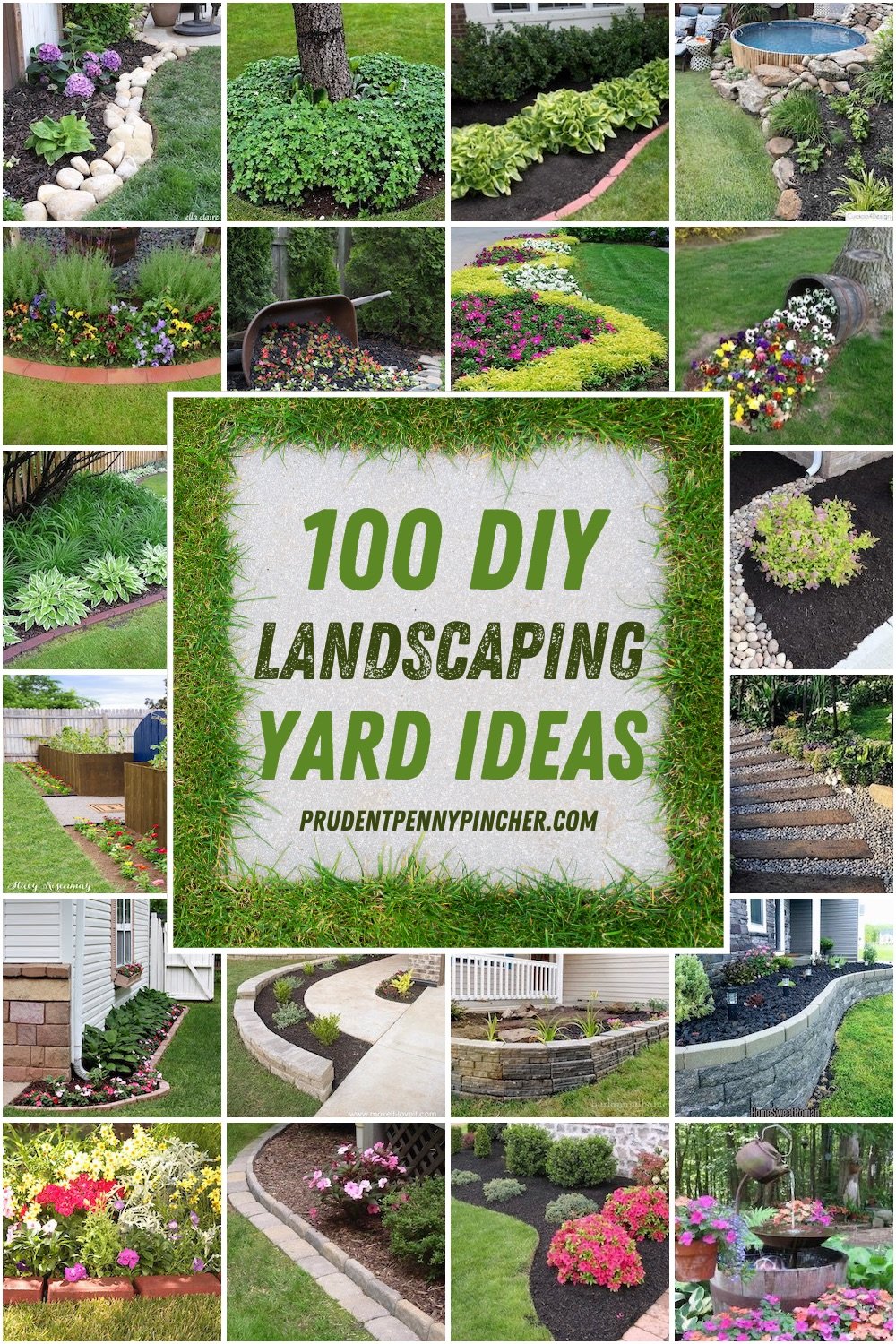
Even in the winter, you can still have a beautiful and colorful landscape. Consider planting evergreen shrubs like holly, juniper, and boxwood for their year-round foliage. These plants will provide a burst of greenery and serve as a backdrop for other winter blooms, such as pansies and cyclamen, which can add pops of color to your garden.
Видео:
5 Ways to Create a Tropical Garden Garden Trends
5 Ways to Create a Tropical Garden Garden Trends by PlantDo Home & Garden 1 year ago 3 minutes, 51 seconds 63,216 views
23 GENIUS IDEAS FOR YOUR GARDEN
23 GENIUS IDEAS FOR YOUR GARDEN by 5-Minute Crafts 4 years ago 9 minutes, 48 seconds 15,717,555 views
Unbelievable DIY Backyard TRANSFORMATION (Thousands $$$ SAVED by Doing it Myself!)
Unbelievable DIY Backyard TRANSFORMATION (Thousands $$$ SAVED by Doing it Myself!) by Andrew Thron Improvements 1 year ago 9 minutes, 28 seconds 3,480,938 views
